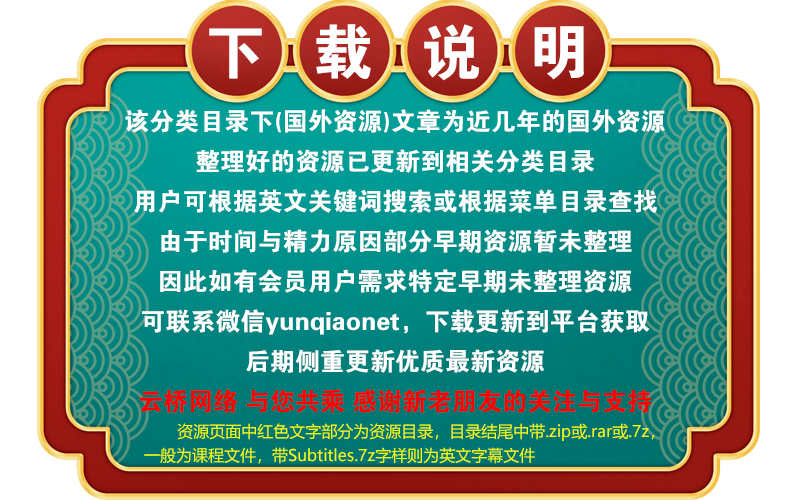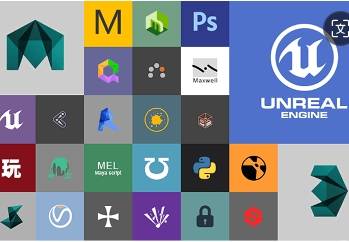Release date:2017, July 24
Duration:05 h 45 m
Author:Adam Crespi
Skill level:Intermediate
Language:English
Exercise files:Yes
Creating procedural materials is an important part of a modern visualization workflow. In this course, learn how to quickly create a variety of architectural materials in Allegorithmic Substance Designer, for application in design-visualization projects. Structured as a series of case studies on common material types such as mosaic tile, wood tile flooring, and woven mesh, this course incorporates techniques for crafting custom materials as needed for a design while staying true to the manufacturer’s intentions. Discover how to create height, normal, and ambient occlusion maps for your substances, mask pattern components to simulate custom material blending such as mixed tile, test your materials in Unity to see how they’d appear in a real-time application, and more.
Topics include:Mosaic and metallic tiles
Determining tile patterns
Varying tile roughness
Exposing parameters for design flexibility
Testing tiles in a scene
Crafting subtle metallic properties
Terrazzo
Patterned tile for accents
Wood tile flooring
Creating wood grain from noise
Ashlar veneer
Molded wall panels
Woven meshIntroduction
Welcome 55s
How to use the exercise files 52s
1. Mosaic TileDetermine the tile pattern 9m 8s
Create the normal map 9m 15s
Add color to the albedo 9m 53s
Vary the tile roughness 7m 43s
Add ambient occlusion and metalness 9m 59s
Create a height map 4m 8s
Expose parameters for design flexibility 3m 24s
Test the tile in a scene 10m 4s
2. Metallic TilesDraw the tile shape 9m 5s
Vary tile direction in the normal map 7m 41s
Craft subtle metallic properties 7m 56s
Generate the albedo 5m 31s
Test the tile in a scene 5m 25s
Add roughness to the grout 6m 56s
3. TerrazzoCreating the matrix 9m 26s
Exposing the stone chips 3m 12s
Vary highlights 7m 46s
Draw masks to make designs 10m 12s
Create the metal splines 8m 59s
Test the terrazzo in a scene 6m 42s
4. Patterned Tile for AccentsDraw the tile design 6m 36s
Create the base color 6m 53s
Create the tile pattern 10m 49s
Make normals to change highlights 7m 1s
Test the tile in a scene 6m 33s
5. Wood Tile FlooringCreate wood grain from noise 7m 43s
Randomize plank placement 7m 42s
Expose colors for design flexibility 7m 38s
Create the normal map 6m 23s
Create roughness variation 5m 6s
Test the flooring in a scene 8m 7s
6. Ashlar VeneerCreate rock shapes 7m 2s
Randomize stone elements 5m 23s
Add ambient occlusion 4m 52s
Add metallic qualities 3m 46s
Adjust the roughness of the stone 2m 59s
Add color to the albedo 5m 40s
Expose parameters for experiments 2m 52s
Test the stone in a scene 5m 44s
7. Molded Wall PanelsDraw the panel shape 11m 52s
Expose the roughness to vary sheen 6m 7s
Generate the albedo 3m
Tile the shape 6m 42s
Test the panel in a scene 6m 17s
8. Woven MeshEstablish a weave 6m 30s
Weave in the color 5m 36s
Create the normal map 6m 41s
Add ambient occlusion 3m 55s
Expose albedo parameters 3m 28s
Tune roughness and metallness 4m
Test the mesh in a scene 7m 40s
Conclusion Next steps 53s00. Introduction 01 – Welcome 02 – How to use the exercise files
01. Mosaic Tile 03 – Determine the tile pattern 04 – Create the normal map 05 – Add color to the albedo 06 – Vary the tile roughness 07 – Add ambient occlusion and metalness 08 – Create a height map 09 – Expose parameters for design flexibility 10 – Test the tile in a scene
02. Metallic Tiles Ex_Files_Substance_Painter_EssT_Pt1.7z 11 – Draw the tile shape 12 – Vary tile direction in the normal map 13 – Craft subtle metallic properties 14 – Generate the albedo 15 – Test the tile in a scene 16 – Add roughness to the grout
03. Terrazzo 17 – Creating the matrix 18 – Exposing the stone chips 19 – Vary highlights 20 – Draw masks to make designs 21 – Create the metal splines 22 – Test the terrazzo in a scene
04. Patterned Tile for Accents 23 – Draw the tile design 24 – Create the base color 25 – Create the tile pattern 26 – Make normals to change highlights 27 – Test the tile in a scene
05. Wood Tile Flooring 28 – Create wood grain from noise 29 – Randomize plank placement 30 – Expose colors for design flexibility 31 – Create the normal map 32 – Create roughness variation 33 – Test the flooring in a scene
06. Ashlar Veneer 34 – Create rock shapes 35 – Randomize stone elements 36 – Add ambient occlusion 37 – Add metallic qualities 38 – Adjust the roughness of the stone 39 – Add color to the albedo 40 – Expose parameters for experiments 41 – Test the stone in a scene
07. Molded Wall Panels 42 – Draw the panel shape 43 – Expose the roughness to vary sheen 44 – Generate the albedo 45 – Tile the shape 46 – Test the panel in a scene
08. Woven Mesh 47 – Establish a weave 48 – Weave in the color 49 – Create the normal map 50 – Add ambient occlusion 51 – Expose albedo parameters 52 – Tune roughness and metallness 53 – Test the mesh in a scene
09. Conclusion 54 – Next steps
Ex_Files_Substance_Designer_ArchVis.7z
 Channel and
Channel and  Group
Group
1、登录后,打赏30元成为VIP会员,全站资源免费获取!
2、资源默认为百度网盘链接,请用浏览器打开输入提取码不要有多余空格,如无法获取 请联系微信 yunqiaonet 补发。
3、分卷压缩包资源 需全部下载后解压第一个压缩包即可,下载过程不要强制中断 建议用winrar解压或360解压缩软件解压!
4、云桥网络平台所发布资源仅供用户自学自用,用户需以学习为目的,按需下载,严禁批量采集搬运共享资源等行为,望知悉!!!
5、云桥网络-CG数字艺术学习与资源分享平台,感谢您的赞赏与支持!平台所收取打赏费用仅作为平台服务器租赁及人员维护资金 费用不为素材本身费用,望理解知悉!



评论(0)